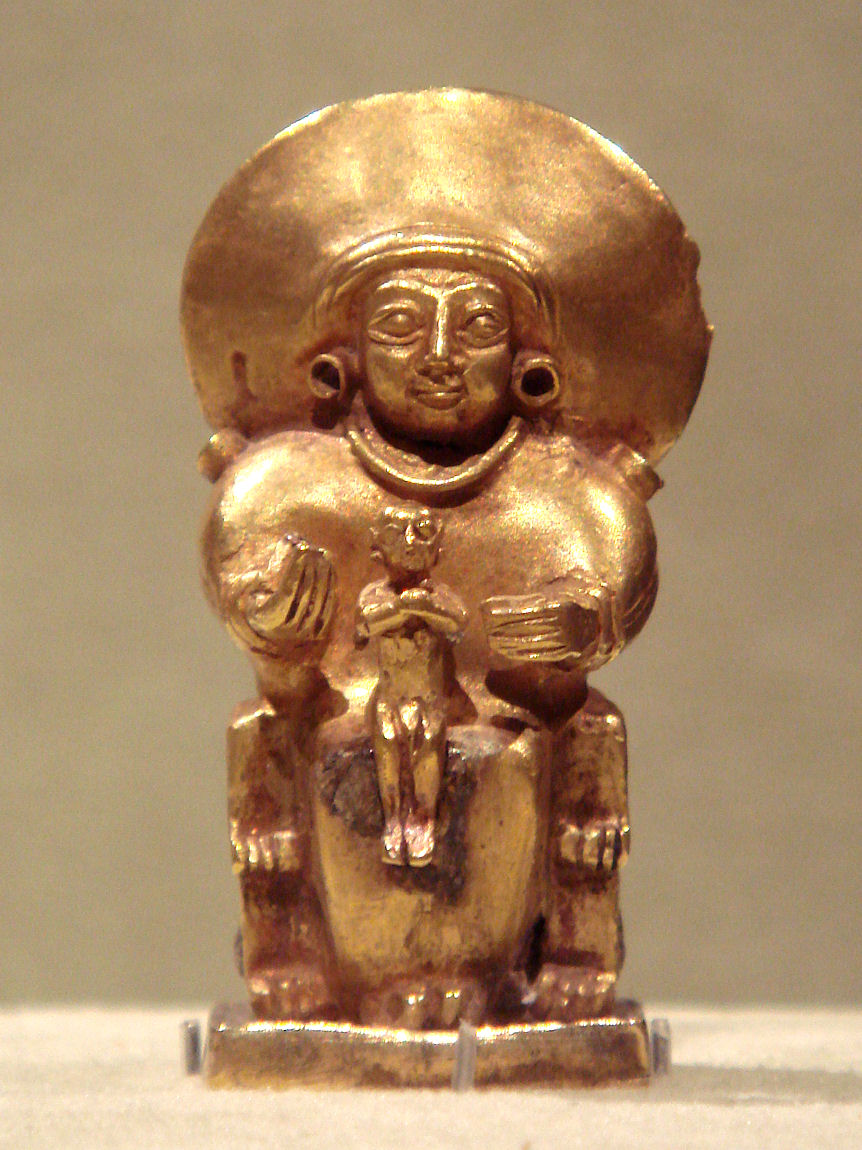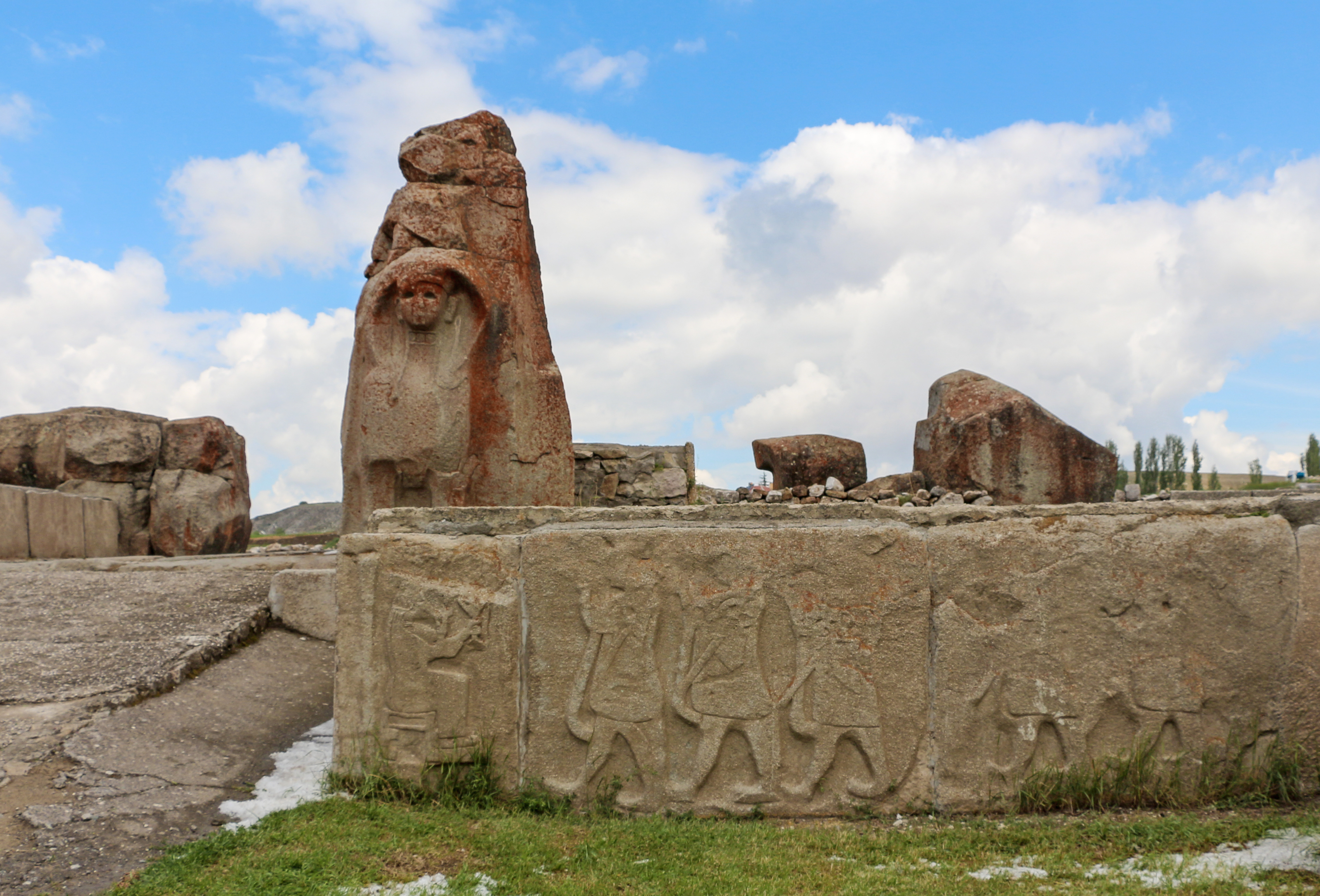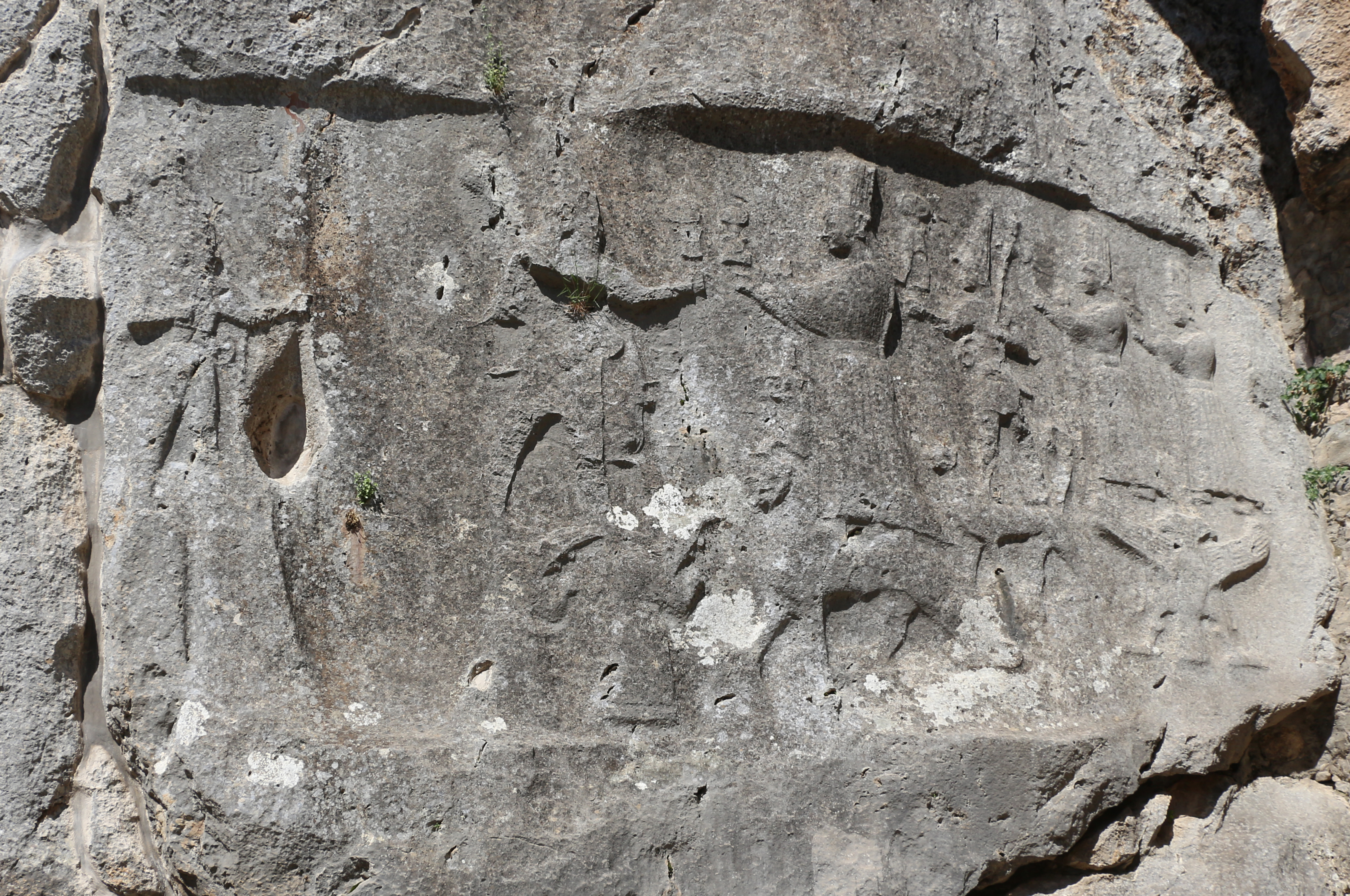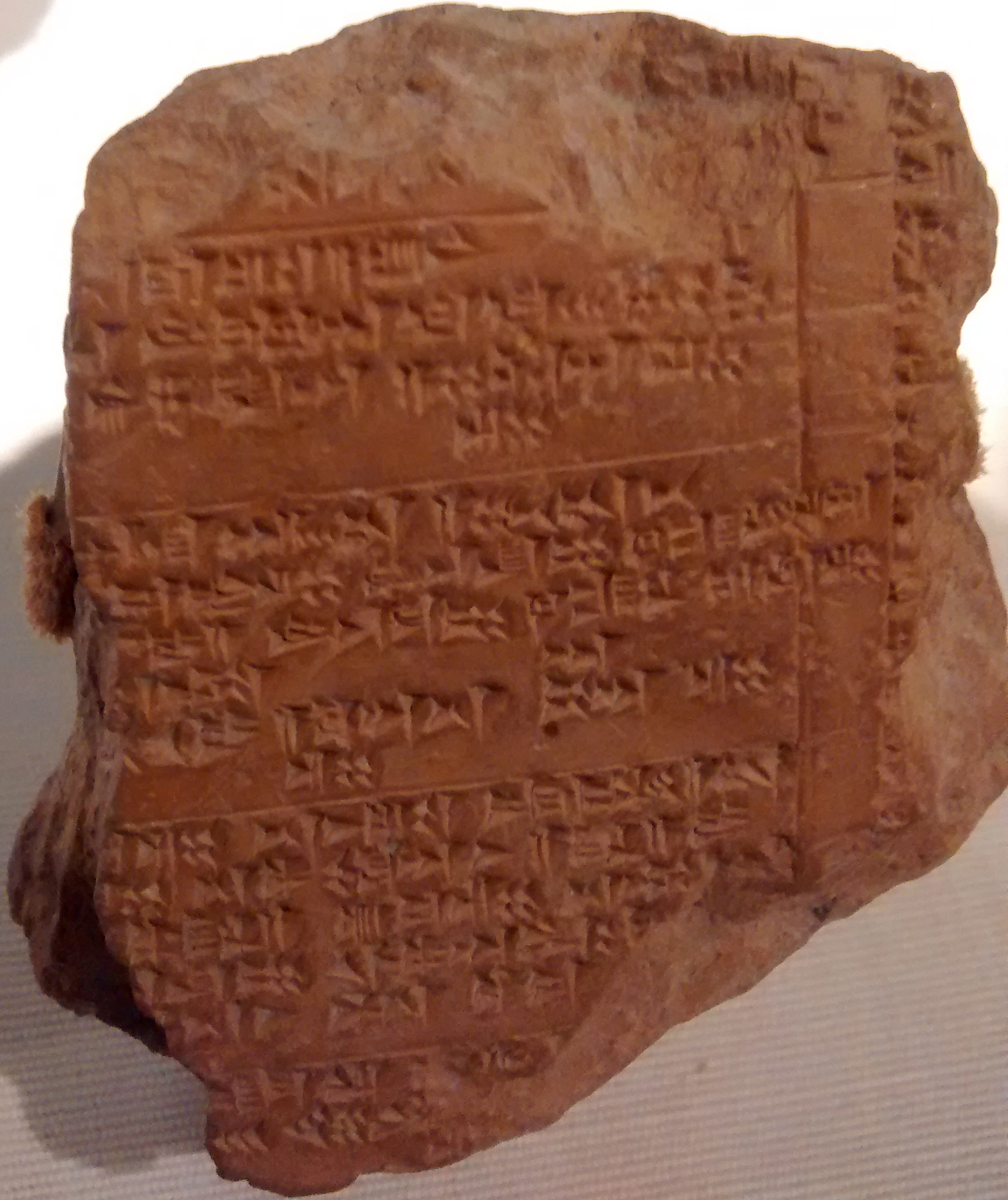|
Arinniti
The Sun goddess of Arinna, also sometimes identified as Arinniti or as Wuru(n)šemu, is the chief goddess and companion of the weather god Tarḫunna in Hittite mythology. She protected the Hittite kingdom and was called the "Queen of all lands." Her cult centre was the sacred city of Arinna. In addition to the Sun goddess of Arinna, the Hittites also worshipped the Sun goddess of the Earth and the Sun god of Heaven, while the Luwians originally worshipped the old Proto-Indo-European Sun god Tiwaz. It appears that in the northern cultural sphere of the early Hittites, there was no male solar deity. Distinguishing the various solar deities in the texts is difficult since most are simply written with the Sumerogram dUTU (Solar deity). As a result, the interpretation of the solar deities remains a subject of debate. Family and myths The Sun goddess of Arinna and the weather god Tarḫunna formed a pair and together they occupied the highest position in the Hittite state's pan ... [...More Info...] [...Related Items...] OR: [Wikipedia] [Google] [Baidu] |
Hittite Mythology
Hittite mythology and Hittite religion were the religious beliefs and practices of the Hittites, who created an empire centered in what is now Turkey from . Most of the narratives embodying Hittite mythology are lost, and the elements that would give a balanced view of Hittite religion are lacking among the tablets recovered at the Hittite capital Hattusa and other Hittite sites. Thus, "there are no canonical scriptures, no theological disquisitions or discourses, no aids to private devotion". Some religious documents formed part of the corpus with which young scribes were trained, and have survived, most of them dating from the last several decades before the final burning of the sites. The scribes in the royal administration, some of whose archives survive, were a bureaucracy, organizing and maintaining royal responsibilities in areas that would be considered part of religion today: temple organization, cultic administration, reports of diviners, make up the main body of sur ... [...More Info...] [...Related Items...] OR: [Wikipedia] [Google] [Baidu] |
Arinna
Arinna was the major cult center of the Hittite sun-goddess known as dUTU URU''Arinna'' or " Sun-Goddess of Arinna", who is also sometimes identified as ''Arinniti'' or as ''Wuru(n)šemu''. Arinna was located near Hattusa, the Hittite capital. The Sun-Goddess of Arinna is the most important one of three important solar deities of the Hittite pantheon, besides dUTU ''nepisas'' 'the sun of the sky' and dUTU ''taknas'' 'the sun of the earth'. She was considered to be the chief deity in some sources, in place of her husband. Her consort was the Storm-God; they and their children were all derived from the former Hattic pantheon. The goddess was also perceived to be a paramount chthonic or earth goddess. She becomes largely syncretised with the Hurrian goddess Hebat, as the Hittite Storm-God was with Teshub. In the late 14th century BC, King Mursili II was particularly devoted to the Sun-Goddess of Arinna. See also * Hittite mythology * Alaca Höyük Alacahöyük or Alaca ... [...More Info...] [...Related Items...] OR: [Wikipedia] [Google] [Baidu] |
Telipinu (god)
Telipinu (Cuneiform: , ; Hattic: ''Talipinu'' or ''Talapinu'', "Exalted Son")Beckman, Gary. "Telipinu" in ''Reallexicon der Assyriologie und Vorderasiatischen Archäologie'', Vol. 13. 2012 was a Hittite god who most likely served as a patron of farming, though he has also been suggested to have been a storm god or an embodiment of crops. He was a son of the weather god Tarḫunna ( Taru) and the solar goddess Arinniti in the system of their mythology. His wife was the goddess Ḫatepuna, though he was also paired with and Kataḫḫa at various cultic centres. Telipinu was honored every nine years with an extravagant festival in the autumn at Ḫanḫana and Kašḫa, wherein 1000 sheep and 50 oxen were sacrificed and the symbol of the god, an oak tree, was replanted. He was also invoked formulaically in a daily prayer for King Muršili II during the latter's reign. An ancient Hittite myth about Telipinu, the ''Telipinu Myth'', describes how his disappearance causes all fertilit ... [...More Info...] [...Related Items...] OR: [Wikipedia] [Google] [Baidu] |
Ḫepat
Ḫebat ( xhu, 𒀭𒄭𒁁, ), also transcribed Khepat, was the mother goddess of the Hurrians, known as "the mother of all living". She was a popular deity, and her name appears in many Theophoric name, theophoric personal names. A king of Jerusalem mentioned in the Amarna letters was named Abdi-Heba, possibly meaning "Servant of Ḫepat". Origin Alfonso Archi assumes that her Hurrian name was derived from an earlier form known from Ebla: d''Ha-a-ba-du'', "she of Halab," already associated with a weather god (the Semitic Hadda rather than Hurrian Teshub) in some offering lists. Mythical family and associated deities Hurrians, who incorporated a number of preexisting Syrian deities into their own pantheon, regarded their head god Teshub as Hebat's husband. The mountain god Sarruma, already part of her circle in earlier times, was reinterpeted as their son as a result, and in cult he functioned as a dyad with his mother. They also had a daughter, Alanzu. Lluís Feliu in ... [...More Info...] [...Related Items...] OR: [Wikipedia] [Google] [Baidu] |
Hittite Texts
The corpus of texts written in the Hittite language is indexed by the ''Catalogue des Textes Hittites'' (CTH, since 1971). The catalogue is only a classification of texts; it does not give the texts. One traditionally cites texts by their numbers in CTH. Major sources for studies of selected texts themselves are the books of the StBoT series and the online ''Textzeugnisse der Hethiter''. CTH numbering scheme The texts are classified as follows: *Historical Texts (CTH 1–220) *Administrative Texts (CTH 221–290) *Legal Texts (CTH 291–298) *Lexical Texts (CTH 299–309) *Literary Texts (CTH 310–320) *Mythological Texts (CTH 321–370) *Hymns and Prayers (CTH 371–389) *Ritual Texts (CTH 390–500) *Cult Inventory Texts (CTH 501–530) *Omen and Oracle Texts (CTH 531–582) *Vows (CTH 583–590) *Festival Texts (CTH 591–724) *Texts in Other Languages (CTH 725–830) *Texts of Unknown Type (CTH 831–833) Selected texts Some Wikipedia articles dedicated to specific Hittite te ... [...More Info...] [...Related Items...] OR: [Wikipedia] [Google] [Baidu] |
Hittite New Kingdom
The Hittites () were an Anatolian people who played an important role in establishing first a kingdom in Kussara (before 1750 BC), then the Kanesh or Nesha kingdom (c. 1750–1650 BC), and next an empire centered on Hattusa in north-central Anatolia (around 1650 BC). This empire reached its height during the mid-14th century BC under Šuppiluliuma I, when it encompassed an area that included most of Anatolia as well as parts of the northern Levant and Upper Mesopotamia. Between the 15th and 13th centuries BC, the Empire of Hattusa—in modern times conventionally called the Hittite Empire—came into conflict with the New Kingdom of Egypt, the Middle Assyrian Empire and the empire of Mitanni for control of the Near East. The Middle Assyrian Empire eventually emerged as the dominant power and annexed much of the Hittite Empire, while the remainder was sacked by Phrygian newcomers to the region. After BC, during the Late Bronze Age collapse, the Hittites splintered into seve ... [...More Info...] [...Related Items...] OR: [Wikipedia] [Google] [Baidu] |
Hurrian Religion
The Hurrian religion was the polytheistic religion of the Hurrians, a Bronze Age people of the Near East who chiefly inhabited the north of the Fertile Crescent. While the oldest evidence goes back to the third millennium BCE, is best attested in cuneiform sources from the second millennium BCE written not only in the Hurrian language, but also Akkadian, Hittite and Ugaritic. It was shaped by the contacts between Hurrians and various cultures they coexisted with. As a result, the Hurrian pantheon included both natively Hurrian deities and those of foreign origin, adopted from Mesopotamian, Syrian (chiefly Eblaite and Ugaritic), Anatolian and Elamite beliefs. The culture of the Hurrians were not entirely homogeneous, and different local religious traditions are documented in sources from Hurrian kingdoms such as Arrapha, Kizzuwatna and Mitanni, as well as from cities with sizeable Hurrian populations, such as Ugarit and Alalakh. Hurrian religion was one of the best attested influ ... [...More Info...] [...Related Items...] OR: [Wikipedia] [Google] [Baidu] |
Puduḫepa
Puduḫepa or Pudu-Kheba ( fl. 13th century BC) was a Hittite queen, her companion being the King Hattusili III Ḫattušili (''Ḫattušiliš'' in the inflected nominative case) was the regnal name of three Hittite kings: * Ḫattušili I (Labarna II) *Ḫattušili II *Ḫattušili III It was also the name of two Neo-Hittite kings: * Ḫattušili I (Labarn .... She has been referred to as "one of the most influential women known from the Ancient Near East." Biography Early life and marriage Puduḫepa was born at the beginning of the 13th century BC in the city of Lawazantiya in Kizzuwatna (i.e. Cilicia, a region south of the Hittite kingdom). Her father Bentepsharri was the head priest of the tutelary god, divinity of the city, Shaushka (identified with the Mesopotamian Ishtar), and Puduḫepa grew up to exercise the function of priestess of this same goddess. On his return from the Battle of Kadesh, the Hittite General officer, general Hattusili met Puduḫepa and, it was ... [...More Info...] [...Related Items...] OR: [Wikipedia] [Google] [Baidu] |
Ḫattušili I
Hattusili I (''Ḫattušili'' I) was a king of the Hittite Old Kingdom. He reigned ca. 1650–1620 BCE as per middle chronology, the most accepted chronology nowadays, or alternatively ca. 1586–1556 BCE (short chronology). Excavations in Zincirli Höyük, Southern Turkey, suggest that Hattusili I destroyed a complex at that site in the mid to late 17th century BCE, which can confirm the middle chronology dating for his reign.Herrmann, Virginia, et al., (2020)"Iron Age Urbanization and Middle Bronze Age Networks at Zincirli Höyük: Recent Results from the Chicago-Tübingen Excavations" in ASOR 2020 Annual Meeting.Urbanus, Jason, (November/December 2019)"The Wrath of the Hittites" Archaeological Institute of America: "...The project leaders believe that they know who was responsible for the swath of destruction: Hattusili I (r. ca. 1650–1620 B.C.), one of the first kings of the Hittite Empire, which was expanding its territory from central Anatolia during the second millennium B. ... [...More Info...] [...Related Items...] OR: [Wikipedia] [Google] [Baidu] |
Hittite Middle Kingdom
The Hittites () were an Anatolian people who played an important role in establishing first a kingdom in Kussara (before 1750 BC), then the Kanesh or Nesha kingdom (c. 1750–1650 BC), and next an empire centered on Hattusa in north-central Anatolia (around 1650 BC). This empire reached its height during the mid-14th century BC under Šuppiluliuma I, when it encompassed an area that included most of Anatolia as well as parts of the northern Levant and Upper Mesopotamia. Between the 15th and 13th centuries BC, the Empire of Hattusa—in modern times conventionally called the Hittite Empire—came into conflict with the New Kingdom of Egypt, the Middle Assyrian Empire and the empire of Mitanni for control of the Near East. The Middle Assyrian Empire eventually emerged as the dominant power and annexed much of the Hittite Empire, while the remainder was sacked by Phrygian newcomers to the region. After BC, during the Late Bronze Age collapse, the Hittites splintered into seve ... [...More Info...] [...Related Items...] OR: [Wikipedia] [Google] [Baidu] |







